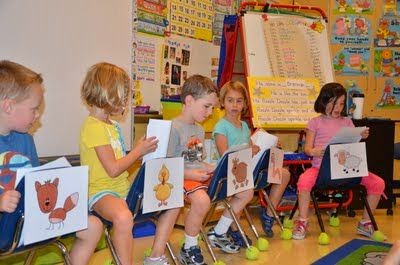Comprehension is a key factor in determining reading skills throughout all grade levels. However, it is often expected and not expressed. Bassically, we often think it comes automatically (which it does a little) and overlook how to teach comprehension to children. In chapter 7 of Classrooms That Work, comprehension is expressed in detail and several methods of how to teach it are listed.
1. Think-Alouds: A way of modeling or publicly speaking about the thinking going on in your head when you are reading.
Here are some examples of what we could say to our students as we are reading to them:
- I wonder what will happen next
- I know she must be feeling...
- Mmmm I can smell the....
*The poster to the right could hang up in the classroom as the class is reading.
2. KWL: What we know, what we want to know, and what we learned posters are a great way to track comprehension in informational texts. This allows the children to ask questions and discover answers as they are reading. These can be used for a variety of grade levels but most often used in 3rd-5th grade. Here is a print off!

Other ideas for comprehension that I found on Pinterest include a thinking bubble for the children when they are reading, sticky notes that mean different thoughts throughout their reading, and a reading comprehension chart to place in the classroom!

Thinking
Bubble: --->
"Think Marks": Helpful Poster:
Question: What are some other ideas you have for your future classroom when it comes to reading comprehension?







